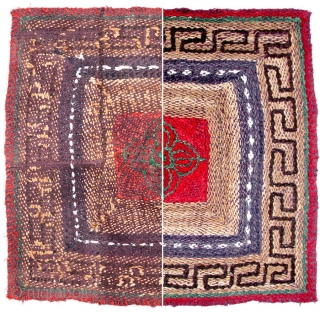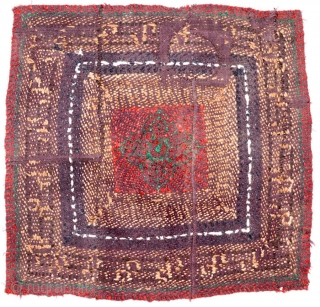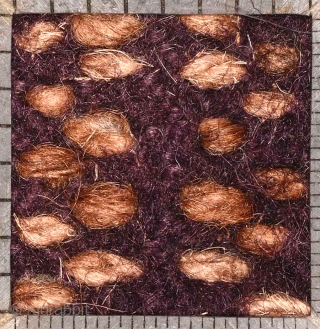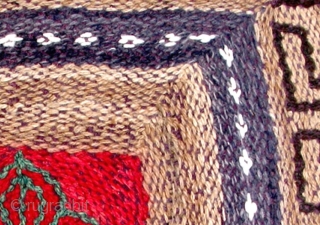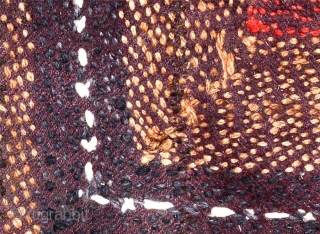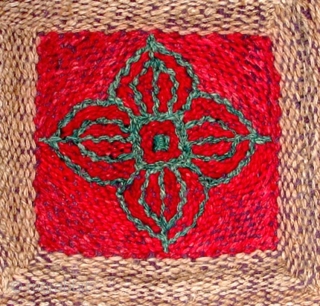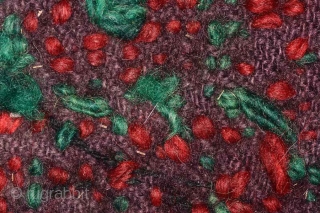Back
Tibet. Unique pile-less seating square woven in a very interesting and unusual knotting style, being either rural or nomadic work with primarily natural dyes, and un-dyed lustrous wool. The center square features a green double dorje over-stitched onto the bright red field, which may indicate that it was given as a gift to a person of higher status. The narrow red woven outer strip resembles the red covered felt border seen on many Tibetan carpets, and the main outer border is often referred to a simple or single key meander design, while the inner border is meant to depict pearls. Made circa the 1920’s, size 0.68m x 0.69m (approx 26.5” x 27”) and with its entire construction being of wool. All in all a very unique 'flat-faced' woven piece, of a knotting technique – that could be construed as likened to embroidery - seldom employed and even less seldom seen in the market place; and in excellent condition as it appears to have been seldom used itself (as was common with many gifts to monastic personages or officials).
price:
Price on request
- Home
- Antique Rugs by Region
- Category
- Profiles
- Post Items Free
- Albums
- Benaki Museum of Islamic Art
- Budapest: Ottoman Carpets
- Gulbenkian Museum
- Islamic Carpets. Brooklyn
- Islamic Textiles. Brooklyn
- Konya Museum: Rugs
- MKG, Hamburg
- MMA: Caucasian Carpets
- MMA: Mamluk Carpets
- MMA: Mughal Indian Carpets
- MMA: Ottoman Carpets
- MMA: Safavid Persian Carpets
- MMA: Turkmen Rugs
- McCoy Jones Kilims
- Ottoman textiles. Met
- Philadelphia Museum
- Rugs and Carpets: Berlin
- Seljuqs at the Met
- TIEM, Istanbul: Carpets
- V&A: Classical Carpets
- Vakiflar Carpets: Istanbul
- Baluch Rugs: Indianapolis
- Gallery Exhibitions
- Jaf an Exhibition
- Alberto Levi Gallery
- Andean Textile
- Christie's London: 2016
- Francesca Galloway
- HALI at 40
- ICOC Washington, DC 2018
- Jajims of the Shahsavan
- London Islamic Week April, 2018
- Mongolian Felts
- Navajo Rugs: JB Moore
- Persian Piled Weavings
- SF Tribal & Textile Art Show 2020
- SF Tribal 2019
- Sotheby's: C. Alexander
- Turkish Prayer Rugs
- Turkmen Main Carpets ICOC 2007










